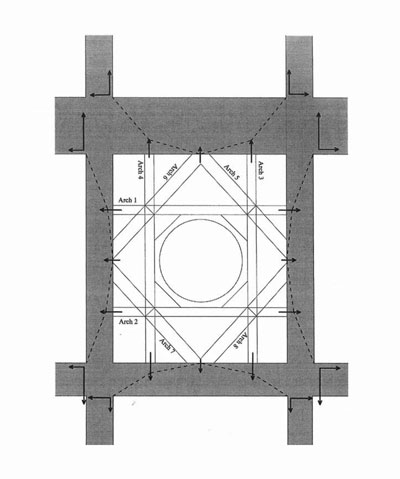The Islamic Crossed-arch domes in Córdoba. Geometry and Structural Analysis of the “Capilla de Villaviciosa”
Autora: Paula Fuentes
Crossed-arch domes are a singular type of ribbed vaults. Their characteristic feature is that the ribs that form the vault are intertwined, forming polygons or stars, leaving an empty space in the centre. The earliest known vaults of this type are found in the Great Mosque of Córdoba, built ca. 960 a.C. The type spread through Spain, and the north of Africa in the 10th to the 16th Centuries, and was used by Guarini and Vittone in the 17th and 18th Centuries in Italy. However, it was used only in a few buildings.
Though the literature about the structural behaviour of ribbed Gothic vaults is extensive, so far no structural analysis of crossed arch domes has been made.
The purpose of this work is, first to show the way to attack such an analysis within the frame of Modern Limit Analysis of Masonry Structures (Heyman 1995), and then to apply the approach to study the stability of the dome of the Capilla de Villaviciosa. The work may give some clues to art and architectural historians to understand better the origin and development of Islamic dome architecture.
Fuentes, Paula. 2012. The Islamic Crossed-arch domes in Córdoba. Geometry and Structural Analysis of the “Capilla de Villaviciosa”. In: Nuts and Bolts of Construction History. Vol. 1, pp. 317-324. Paris: Picard.











